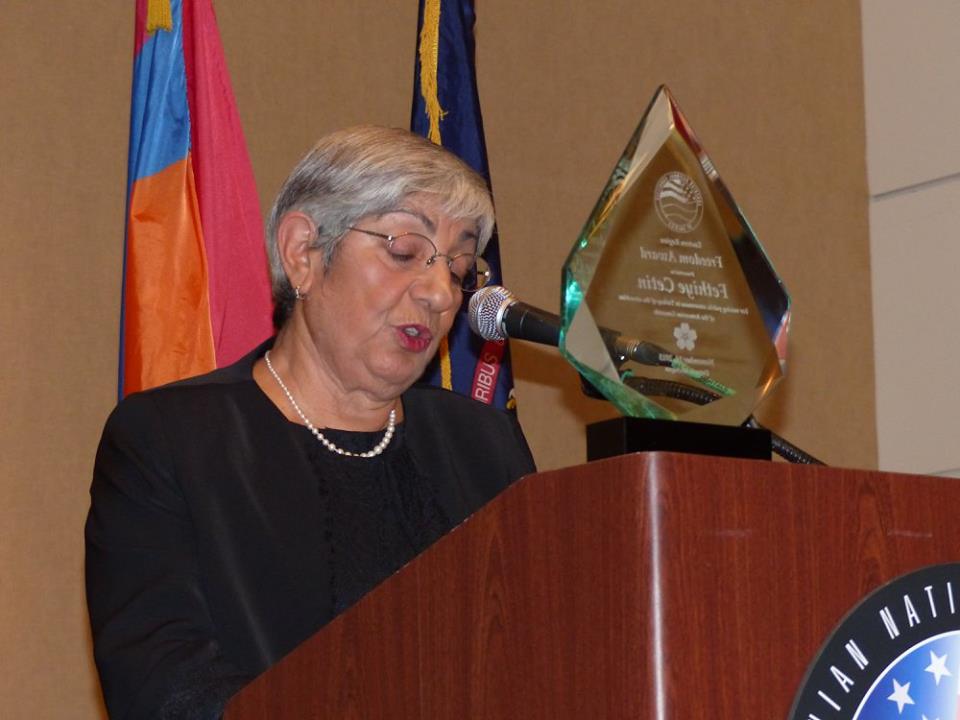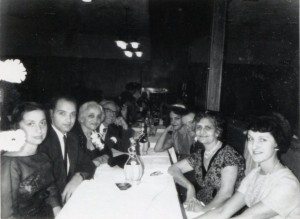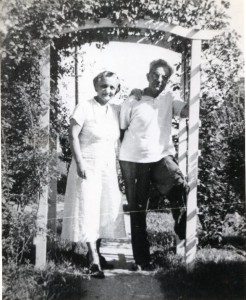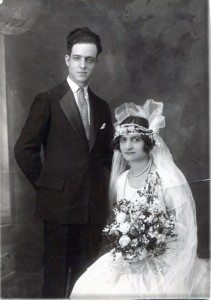Lawyer and human rights activist Fethiye Çetin delivered the following speech (translated by A. Bolcakan) at the Armenian National Committee of America (ANCA) Eastern Region (ER) Banquet on Nov. 14, where she received the ANCA Freedom Award. Çetin is the author of My Grandmother, and co-author of The Grandchildren, which she wrote together with Ayse Gul Altinay. The Freedom Award is given to individuals who have made tremendous contributions toward recognition of the genocide and who have pursued other issues of importance to the Armenian-American community. Below are her remarks in their entirety.

Cetin speaking at the ANCA-ER banquet in Detroit
Dear esteemed administrators and members of the ANCA and honorable guests,
I’d like to state that it’s a great privilege for me to be among you today and to be considered worthy of this very meaningful and very important award, the Freedom Award.
I also feel very honored to be deemed worthy of this award on this year which marks the 100th commemoration of the Armenian Genocide. I’m grateful to all of you for bestowing on me this honor and privilege and I thank you all very much. At the same time, I experience the shame and paradox of coming from a country that is not free to accept the Freedom Award.
I come from a country in which individuals don’t feel free, where every demand for freedom is repressed with blood and violence. A country where violence has become commonplace and is legitimized. A country where peoples’ bodies are blown to bits by state bombs, the bodies of children are riddled with state bullets, and the lives of journalists are made unbearable.
I come from a country where, sadly, the majority of the politicians perceive the blood-thirsty and vicious violence that has been experienced in all spheres of life for years as an issue for today, that it’s a contemporary problem that will change when the government changes. Governments come and go but we’ve been, for the past century, experiencing violence in every sphere and in a most intense form.
However, we haven’t problematized violence and its structural roots and thought enough about them; we haven’t discussed nearly enough the effects of the greatest and the most vicious violence that occurred a century ago.
As it’s known, genocide not only destroys an existing society in a most painful and cruel way, it also molds the fabric of the newly formed society with fear and hate, with violence and shame. Genocide does not only devastate bodies, it also shatters perceptions.
To describe the foundational destruction caused by horrendous physical violence, Hannah Arendt refers to the known expression of the end of the world and tells us that the life people lived up until that point is altered radically and transforms into a fictional world. In this new world, everything is upside-down: Lies and truth have switched places, what was absurd and blood-thirsty has ceased to be an exception and has become the newly established premise. What once was cruel and absurd is now systemic.
‘[G]enocide not only destroys an existing society in a most painful and cruel way, it also molds the fabric of the newly formed society with fear and hate, with violence and shame. Genocide does not only devastate bodies, it also shatters perceptions. … In this new world, everything is upside-down: Lies and truth have switched places, what was absurd and blood-thirsty has ceased to be an exception and has become the newly established premise.’
The Republic of Turkey, which bases its foundation on the atrocity and violence of the genocide, sustains itself by producing fear and threats and by creating expendable and disposable lives.
Yesterday the expendable lives were those of the Armenians. Today, Kurds, women, LGBT people, and members of the opposition meet the same fate.
Because this atmosphere reproduces destruction and traumas, and encourages the state’s policy of violence, cruelty, and hate, we’ve been living in this spiral of violence for years. Because violence is the chronic policy of the state, committing crimes and using violence in the name of the state are not punishable behavior but are rather rewarded.
We have to get out of this spiral of violence. It’s clear that for the Turkish society this is the leading problem—for “Turks,” for “Kurds,” and for others. Let us not forget, the past is an integral part of today. As Arendt reminds us, if evil has been experienced once, there’s absolutely no reason for it not to reoccur. Experiences are recorded in the consciousness and they are as much about the past as they are about the future. Therefore, getting out of this spiral is only possible by reevaluating the workings of the wheel of politics that reproduces violence in different ways every day, by questioning the roots of the state, the nation, and our identities which are all founded on the genocide, by asking ourselves questions about what our grandfathers did.
We are only at the beginning of this difficult journey of asking ourselves difficult questions and of self-scrutiny. But we set out to do this and we can’t go back.
It’s a difficult but an inevitable journey…
My journey began upon learning my grandmother’s story. Her story was about a 9-year-old girl who witnessed cruelty, atrocities, massacres, looting, and horrible pain.
The price of survival meant being taken away from her mother, from the world she knew and trusted, by being thrown among the people who killed her loved ones or who were the onlookers as this atrocity was committed. It meant losing her language, her religion, her name, and her voice. Until she told me her story I knew nothing about the shameful pages of our recent history. What I learned shocked me and elicited feelings of anger and revolt. But since the issue was neither discussed in the public sphere nor talked about in private, I lacked both the political context and the awareness to make sense of what I’ve learned.
What moved me first, was my grandmother’s decades-long silence. She was silent for years, but she forgot nothing; she didn’t forget the names of her mother, father, grandfather, village, and even the name of the head of her village and their experiences. It was as if she repeated everything to herself all these years as not to forget and to be able to tell her story one day. That touched me the most.
I started to share what I had learned with people close to me, and especially with my socialist friends. What caught my attention was the fact that almost everyone had similar stories and that peoples’ voices became whispers when they shared them. The silence was not only that of grandmothers, it was also the silence of a whole society.
But we were young people who set out to change the world thinking that another world was possible. We were watching closely what was happening in Chile, Argentina, and Angola and shouting our slogans at the top of our lungs.
But as soon as we talked about what was happening right before our eyes, in our own land, we were whispering in each other’s ears even when we were in closed, private spaces. That’s why my first question was, “Why this silence?”, and I began to occupy myself with new and difficult questions in the space opened up by this very question.
‘[My grandmother] was silent for years, but she forgot nothing; she didn’t forget the names of her mother, father, grandfather, village, and even the name of the head of her village and their experiences. It was as if she repeated everything to herself all these years as not to forget and to be able to tell her story one day. That touched me the most.’
What happened in 1915, what happened to the Armenians? What does genocide mean, what does survival mean? How did my grandmother and other children and women, who shared the same fate with my grandmother, survive, and why is there no mention of these children and women in official historical narratives and family histories? How does destruction and traumas resulting from genocide affect us? Are policies of forced Islamization, assimilation, erasure of memory, and denial part of the genocide? Is the genocide something that happened and ended in 1915? What are its effects today? How does it shape us?
I know where my grandmother was during the genocide, but do I know where my non-Armenian grandfathers were? Is there no Armenian part to all aspects of my life? What’s the price of the identity and the privileges that I’m given? What we know is limited to what we were told; is it possible to convey the genocide? How did the survivors cope with their traumas and fears; is it possible to heal the wounds, to become whole after the genocide?
What kind of courage, resilience, and strength are needed to stay alive having suffered these wounds and this horrible trauma? Can we improve the future? What do we need to do for that?
I can say this to you: The conscientious elements of Turkish society, especially the young people, started to ask these questions and more; and the numbers of these people are increasing. Despite the delay, 1915 is being discussed in the public sphere, books are being published, feature films and documentaries are being produced, the scholarly interest in the topic is increasing with each passing day. Is it enough? Of course not, there’s still a lot to do, a lot of ground to cover, but although we’re just starting we have cracked a giant door open, we have passed an important threshold.
In the space opened by these questions, asking new questions is now obligatory and inevitable. For we have come to the end of a road burdened with the heavy baggage of history. The everyday practices of violence confirm that this road is a dead end.
Recognizing the genocide is also an obligation for both the Turkish state and society.
It’s imperative to recognize the genocide in order to return the dignity back to the victims of the genocide, to compensate for their damages, to secure justice, to heal the wounds of genocide, to peacefully co-exist in a country free of violence. I Feel the shame of being a citizen of a country that still denies the genocide and not only builds a mausoleum in the middle of Istanbul for the bloodthirsty murderers, but goes as far as naming the place “Freedom Monument” (Abide-i Hürriyet).
I dedicate this award to all victims of the genocide, with respect to our grandfathers and grandmothers who lost their lives during the genocide; and with admiration for the courage, resilience, and strength of the survivors. May they rest in peace.
In conclusion, I hope you will accept my promise that I now make in your presence. You have my word, my friends, you have my word: With the moral support you’ve given me today, I will continue to demand justice, truth, and freedom at all costs, for as long as I can fight and for as long as I live.
You have my word…















